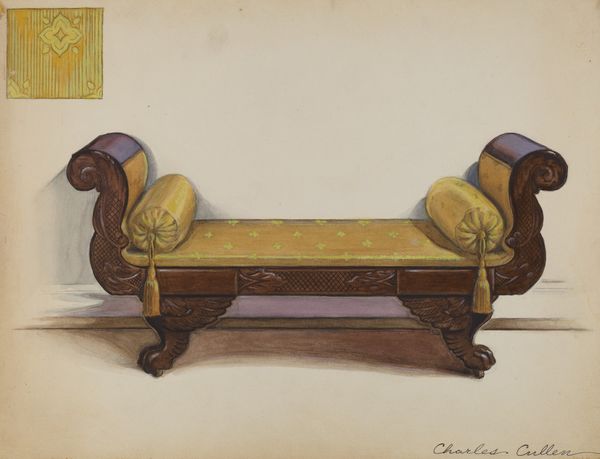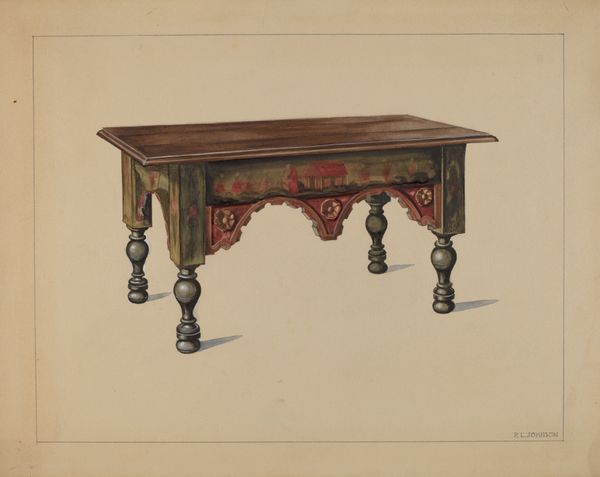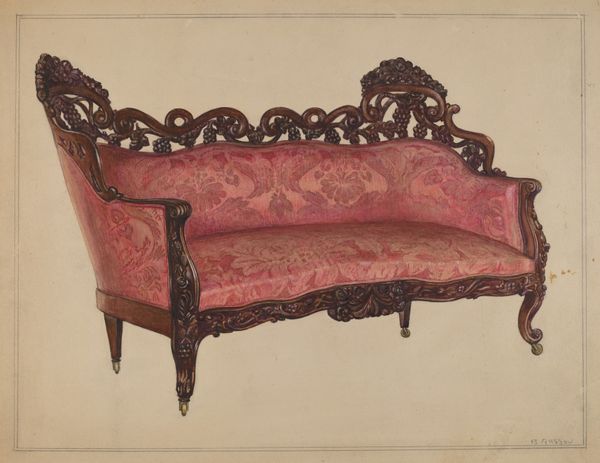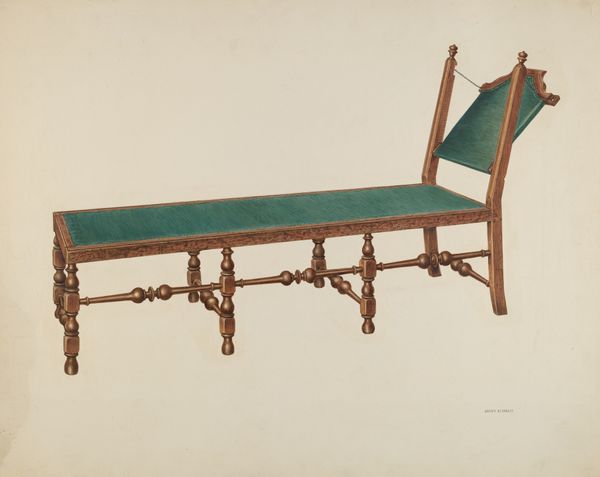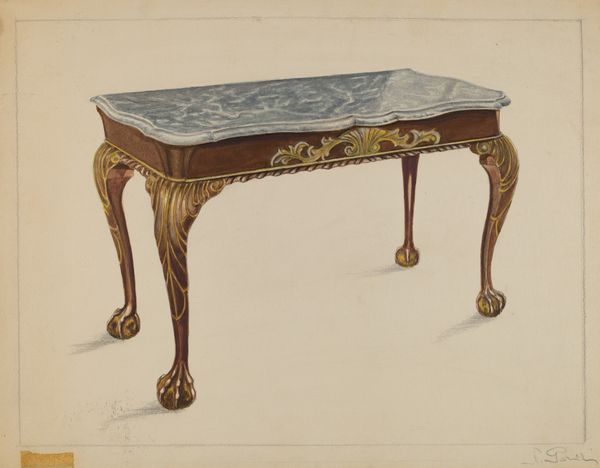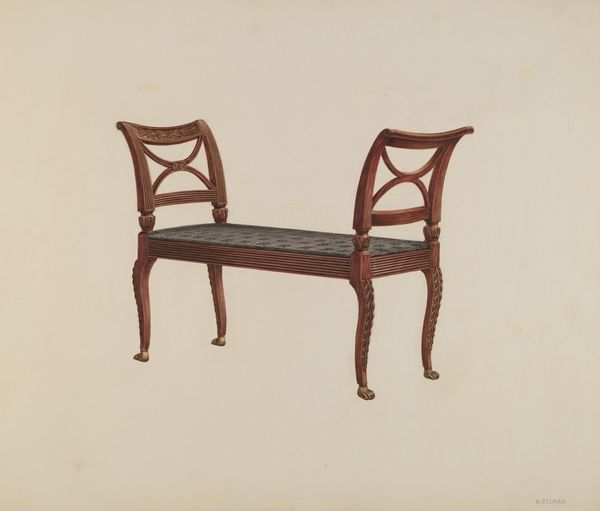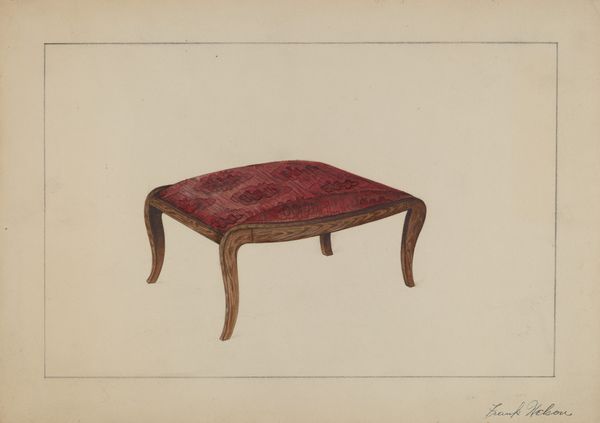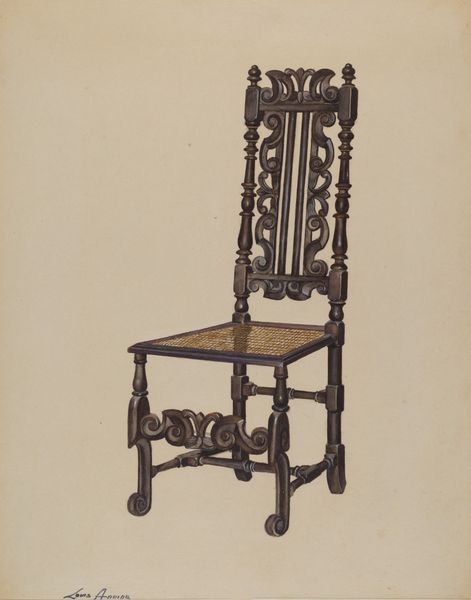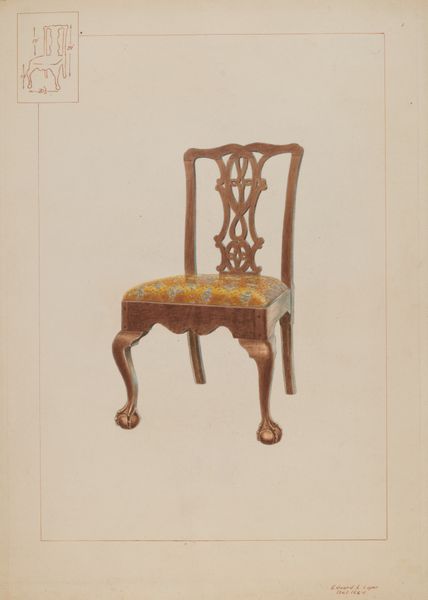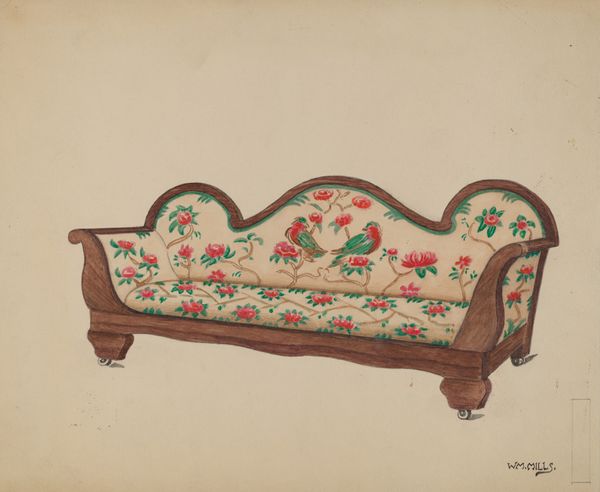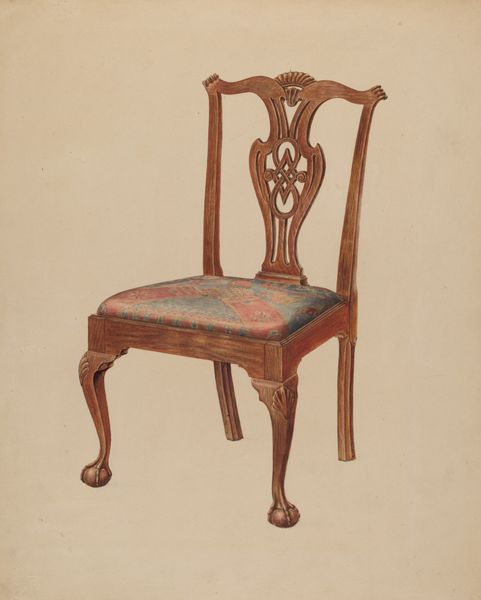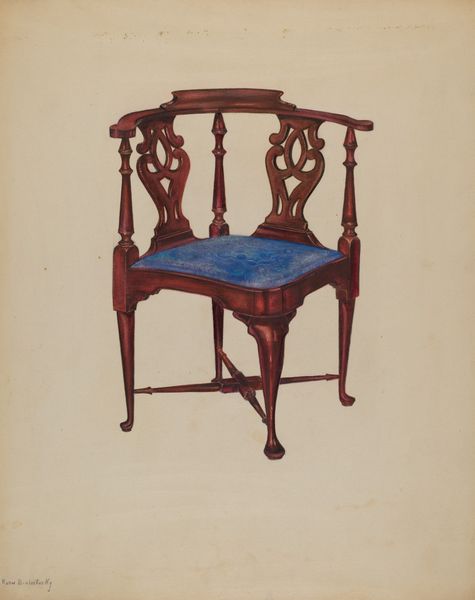
drawing, coloured-pencil
#
drawing
#
coloured-pencil
#
coloured pencil
Dimensions: overall: 23.2 x 30.5 cm (9 1/8 x 12 in.) Original IAD Object: none given
Copyright: National Gallery of Art: CC0 1.0
Curator: Here we have Nicholas Gorid's "Day Bed," rendered between 1935 and 1942, using colored pencils. What's your initial reaction? Editor: There’s a stark formality to it, despite the domestic subject matter. It feels staged, more like a prop than something inviting for daily use. Almost like it should be on a stage. Curator: I see that. The drawing style, precise and somewhat detached, definitely contributes to that impression. Let’s think about the materials and the period. Gorid's choice of colored pencil suggests perhaps this was more of a design sketch, envisioning the furniture more than documenting its material existence. What do you think it communicates about how domestic spaces were viewed in the interwar years? Editor: I’d argue the choice speaks volumes about class and social expectations. This meticulously rendered daybed, though seemingly meant for leisure, hints at the structured lives of those who might own it. It echoes the ways institutions reinforce ideals through visual representations of domesticity. Curator: A really interesting angle. You’re drawing out how even in what seems like a simple design, social expectations around labor and leisure are deeply embedded. The production process itself speaks to a carefully controlled environment, perhaps a workshop where every element is subject to a deliberate crafting process. Editor: And considering its function—a "day bed," a place for rest—it subtly underscores how even leisure is codified, presented in ways that fit into broader cultural norms displayed, promoted and accepted. The artwork hints at societal pressures on how we perform rest, much like a historical portrait. Curator: So it acts almost as a blueprint for social behaviour? Editor: Precisely. The artist gives us an object lesson rather than inviting actual use. We are more inclined to study than recline. Curator: Seeing through that lens truly changes my interpretation. Before, it seemed a somewhat quaint furniture study, but your insights have made it far richer, reflecting the complicated politics and unspoken codes within something as familiar as a piece of furniture. Editor: That's where engaging with its wider history brings context. Otherwise, we're only left with an artifact, rather than an artifact understood through the social structures that produced it and the ideology it quietly carries.
Comments
No comments
Be the first to comment and join the conversation on the ultimate creative platform.
